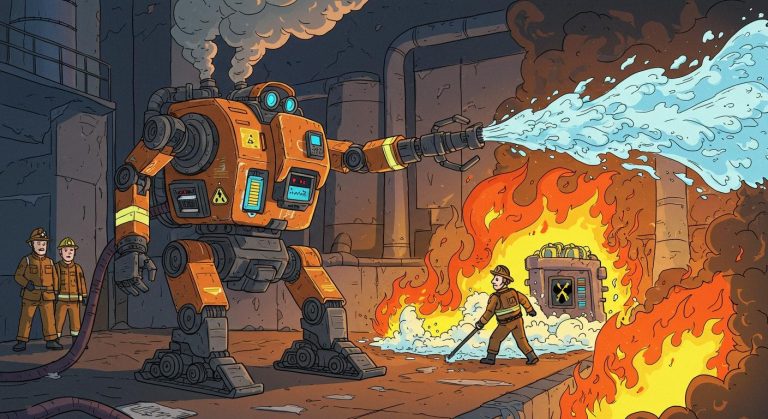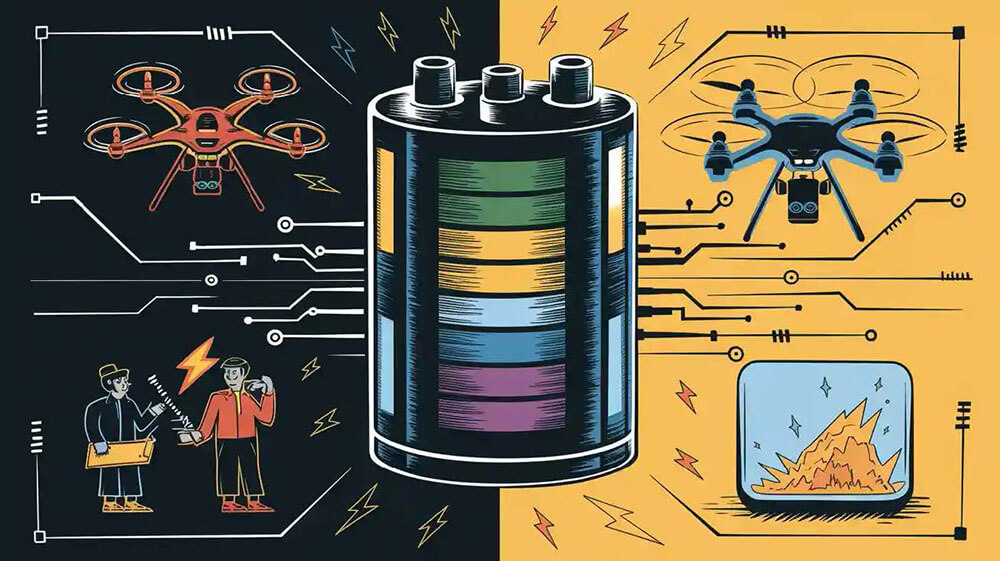
High discharge rate batteries play a vital role in industries needing rapid energy delivery. The rising demand for portable electronics and devices like flagship smartphones highlights their importance. For instance, high-performance activities such as gaming can reduce battery life by 30-40%, requiring powerful batteries to sustain energy demands. These batteries deliver the performance necessary for critical operations, ensuring reliability in sectors like robotics and infrastructure.
Key Takeaways
High discharge rate batteries give quick energy, helping in fields like healthcare, robots, and building systems.
Good heat control is key to stop overheating and make batteries last longer, keeping them dependable for tough tasks.
Even with advantages, these batteries have issues like higher prices and safety concerns, needing careful handling.
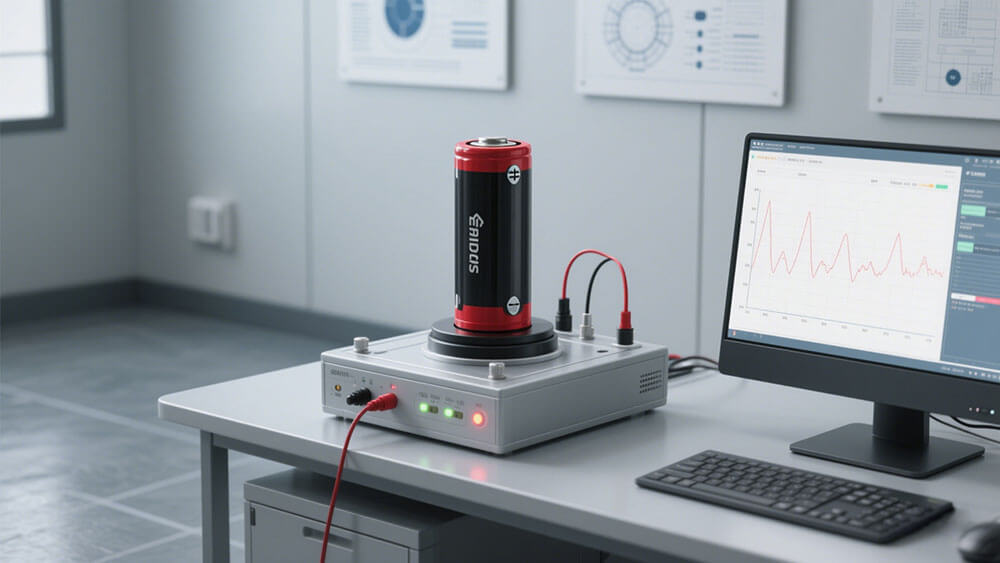
Part 1: What Are High Discharge Rate Batteries?
1.1 Definition and Key Characteristics
High discharge rate batteries are designed to deliver energy at an accelerated pace, meeting the demands of applications requiring rapid power output. These batteries excel in scenarios where quick bursts of energy are essential, such as in robotics or medical devices. A defining feature is their ability to sustain high C-ratings, which measure the rate at which a battery can discharge relative to its capacity. For instance, military-grade batteries can achieve discharge rates exceeding 40 C, far surpassing commercial systems.
Key characteristics include advanced thermal management systems to mitigate degradation caused by high-rate discharges. Studies reveal that thermal effects during rapid energy delivery can lead to lithium loss, reducing battery life. Alternative cell designs are being explored to enhance performance under such conditions. These innovations ensure reliability and efficiency, even in demanding environments.
Aspect | Details |
|---|---|
C-rates | Discharge rates can exceed 40 C-rate for military applications, significantly higher than commercial systems. |
Degradation Mechanisms | Increased lithium loss due to thermal effects during high-rate discharges leads to reduced battery life. |
Thermal Management | Different thermal management systems are recommended to mitigate degradation effects. |
Performance Observations | Degradation observed at 22% and 32% for 2-second and 3-second pulse tests, respectively. |
Cell Design | Alternative cell designs are discussed to improve performance under high discharge conditions. |
1.2 High C-Rating and Its Importance
The high C-rating of these batteries plays a pivotal role in their performance. A higher C-rating enables quicker energy delivery, ensuring consistent power output during critical operations. For example, in robotics, it enhances responsiveness and torque, allowing machines to navigate complex tasks efficiently. Similarly, in consumer electronics, high C-ratings minimize voltage sag, ensuring uninterrupted functionality.
A higher C-rating allows for quicker acceleration and improved responsiveness.
It enhances climbing ability by providing increased torque for navigating steep inclines.
Higher C-ratings minimize voltage sag under load, ensuring consistent power delivery.
However, operating at maximum discharge rates can lead to overheating, reduced lifespan, and stress on electronic components. Proper thermal management and optimized usage are essential to maximize the benefits of high C-rating batteries.
Overheating can occur due to excessive current draw, damaging the battery’s internal chemistry.
Reduced battery lifespan results from operating at maximum discharge rates, leading to diminished capacity over time.
Stress on motors and electronic speed controllers (ESC) can lead to component failure due to excessive heat.
The applications highlight the versatility and importance of high discharge rate batteries in modern technology. To explore custom battery solutions tailored to your industry, visit Large Power.
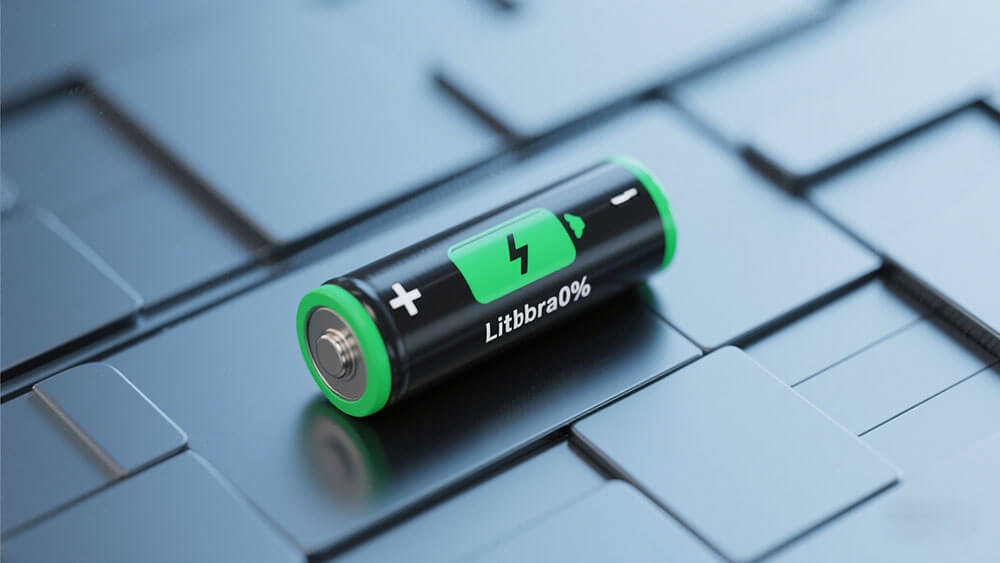
Part 2: Benefits of High Discharge Rate Batteries
2.1 Faster Energy Delivery for Critical Operations
In critical operations, speed and reliability are paramount. High discharge rate batteries excel in delivering energy rapidly, ensuring smooth functionality during high-stakes scenarios. Whether powering industrial equipment or supporting commercial peak shaving, these batteries provide consistent power delivery without compromising performance.
The superior performance of the batteries stems from their advanced electrode materials. Comparative analyses reveal that Fe/Li2O electrodes outperform other materials in high-rate specific capacity and maximum cycle number. This makes them ideal for applications requiring rapid energy delivery.
By leveraging these batteries, you can ensure faster energy delivery and enhanced operational efficiency in critical applications.
2.2 Compatibility with Lithium-Ion Battery Packs
High discharge rate batteries integrate seamlessly with advanced lithium-ion battery packs, offering unparalleled compatibility and performance. Their low internal resistance and high load capability make them suitable for a wide range of applications, from industrial machinery to consumer electronics.
Feature | Spinel Batteries | Cobalt-based Batteries |
|---|---|---|
Internal Resistance | Low | Increases with cycling and aging |
Load Capability | High (20-30A discharge) | Limited (1C discharge rate) |
Thermal Stability | High | Lower, can overheat |
Safety Circuit Requirements | Less complex | More complex due to overheating risks |
Service Life | Similar to cobalt, but more stable | Often unserviceable after 2-3 years |
Understanding the c-rating of these batteries is crucial for optimizing their performance. A higher c-rating ensures maximum continuous discharge, enabling you to meet the energy demands of your specific vehicle type and intended use. This compatibility extends to various lithium-ion chemistries, including NMC and LiFePO4 Lithium batteries, ensuring flexibility and reliability.
2.3 Improved Temperature Stability in Demanding Environments
Operating in harsh conditions requires batteries with robust temperature stability. High discharge rate batteries excel in maintaining performance under extreme temperatures, making them ideal for industrial and infrastructure applications. Experimental data highlights their ability to minimize critical surface temperature changes and maintain high discharge efficiency.
The batteries also feature advanced thermal management systems, reducing heat generation during high discharge cycles. This ensures consistent performance and extends battery capacity, even in demanding environments. By choosing high discharge rate batteries, you can achieve improved temperature stability and enhanced operational reliability.
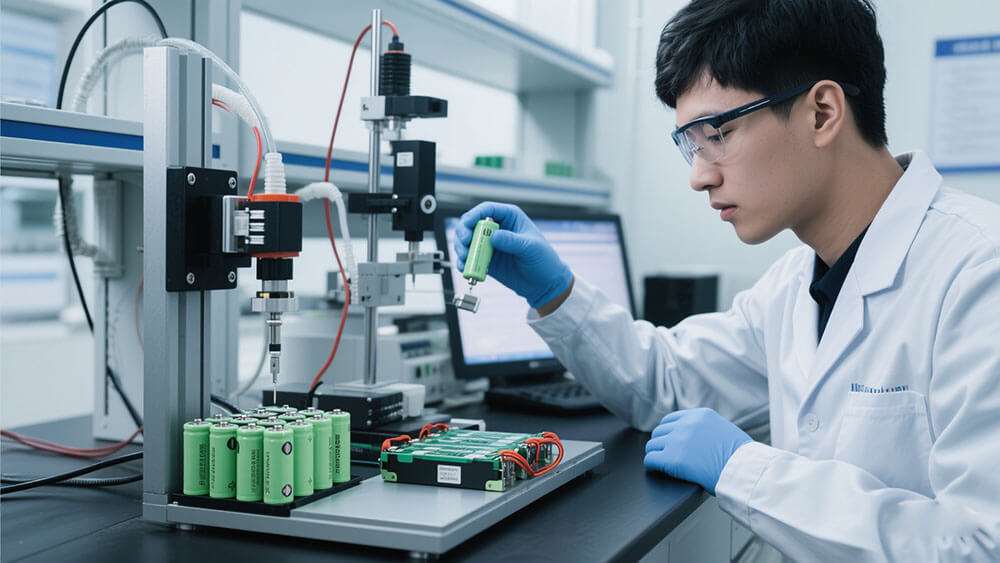
Part 3: Challenges of High Discharge Rate Batteries
3.1 Safety Risks and Thermal Runaway Concerns
High discharge rate batteries present significant safety challenges, particularly related to thermal runaway incidents. These events occur when the battery’s internal temperature rises uncontrollably, leading to catastrophic failure. You must prioritize safety measures to mitigate these risks, especially in applications requiring rapid energy delivery.
Lithium-ion cells with cobalt cathodes should never rise above 130°C (265°F). At 150°C (302°F), the cell becomes thermally unstable, leading to a thermal runaway where flaming gases are vented. During a thermal runaway, the high heat can propagate to adjacent cells, potentially causing a chain reaction of failures.
Faulty handling or internal chemical reactions can also lead to short circuits, further increasing the risk of thermal runaway. Rapid charging can exacerbate this issue by forming dendrites—sharp lithium needles that pierce the separator and cause internal short circuits. These risks highlight the importance of robust thermal management systems and proper handling protocols.
3.2 Reduced Lifespan from High Discharge Cycles
Frequent high discharge cycles can significantly reduce the lifespan of batteries. Operating at maximum continuous discharge rates accelerates wear and tear on the battery’s internal components, leading to diminished capacity over time. For example, lithium-ion batteries experience increased lithium loss during high-rate discharges, which directly impacts their performance and longevity.
The reduced lifespan poses challenges for industries relying on consistent battery capacity for critical operations. In robotics, for instance, diminished battery performance can disrupt automation processes, leading to operational inefficiencies. Similarly, in infrastructure applications like transportation, reduced battery life can increase maintenance costs and downtime.
3.3 Managing Heat Generation in Battery Packs
Managing heat generation is critical for maintaining the performance and safety of high discharge rate batteries. Excessive heat can compromise battery capacity and lead to thermal runaway, especially during high-rate discharges. Effective thermal management systems are essential to address these challenges.
Immersion cooling methods using dielectric nanofluids have shown promise in reducing heat generation.
Experimental data indicates that discharge rates of 3C and 5C generate significant heat, requiring advanced cooling techniques.
3D transient numerical analysis has optimized immersion cooling designs for prismatic cell battery packs, evaluating various cooling fluids and configurations.
Air cooling remains insufficient for next-generation electric vehicles with larger battery packs and ultrafast charging capabilities.
By implementing advanced thermal management solutions, you can enhance the safety and reliability of high discharge rate batteries. These techniques not only prevent overheating but also extend the operational lifespan of the battery packs, ensuring consistent performance in demanding applications.
High discharge rate batteries are essential for industries like medical, robotics, and infrastructure, where rapid energy delivery ensures operational efficiency. The global energy storage market, projected to reach $564.9 billion by 2032, highlights their growing importance. Addressing challenges such as safety risks and costs allows you to maximize their capacity and long-term value. Explore tailored solutions with Large Power to meet your specific needs.
FAQ
1. What industries benefit the most from high discharge rate batteries?
Industries like medical, robotics, infrastructure, and consumer electronics rely on these batteries for rapid energy delivery, ensuring operational efficiency and reliability in critical applications.
2.How do you ensure the safety of high discharge rate batteries?
You can implement advanced thermal management systems, monitor charging cycles, and use certified battery packs to minimize risks like overheating or thermal runaway.
3. Can high discharge rate batteries be customized for specific applications?
Yes, you can customize battery solutions to meet unique requirements. Explore tailored options with Large Power.



